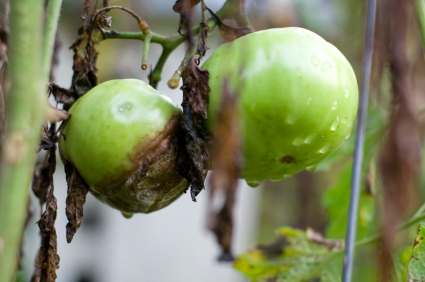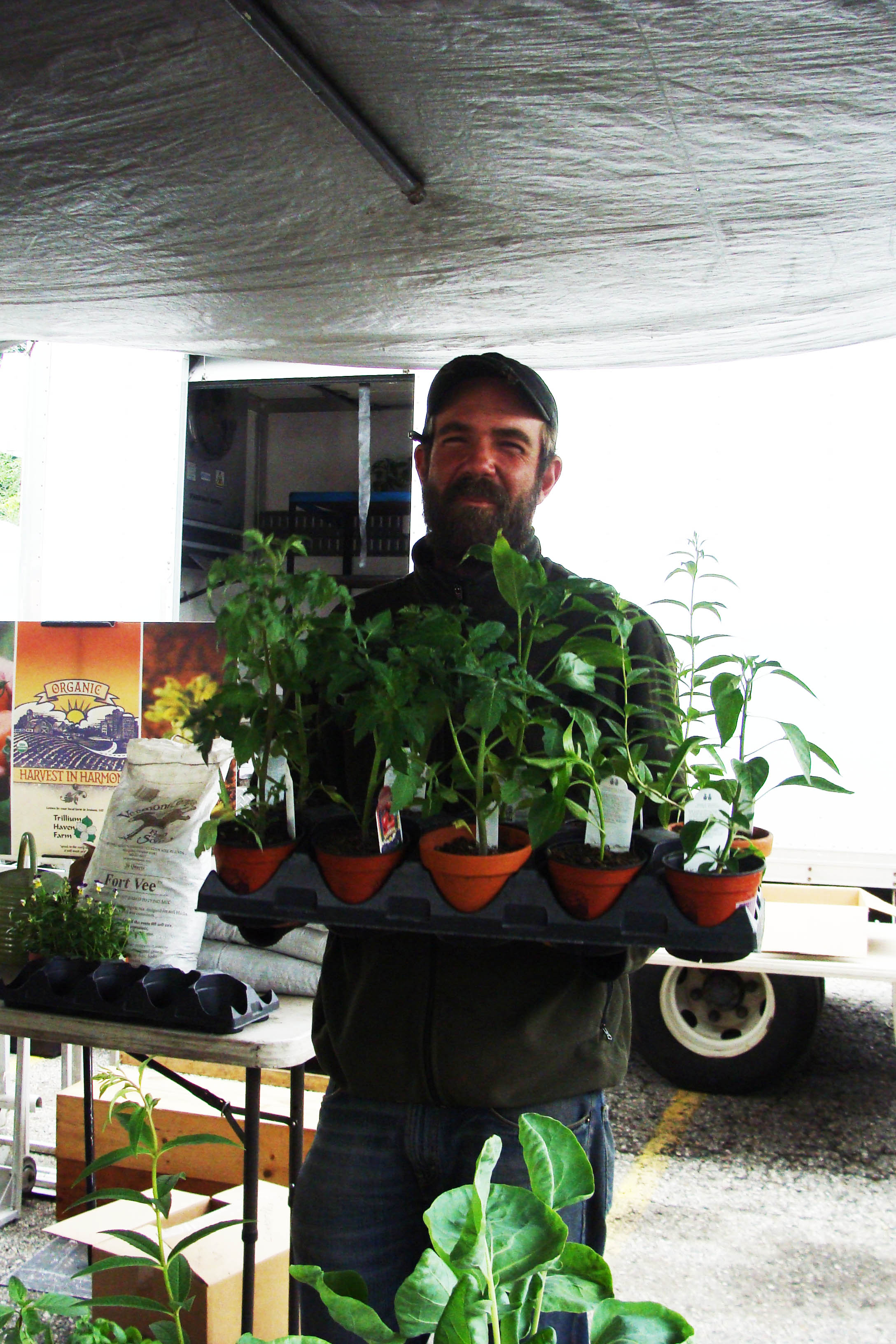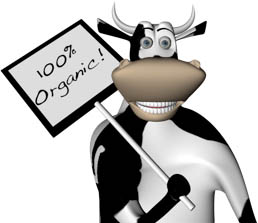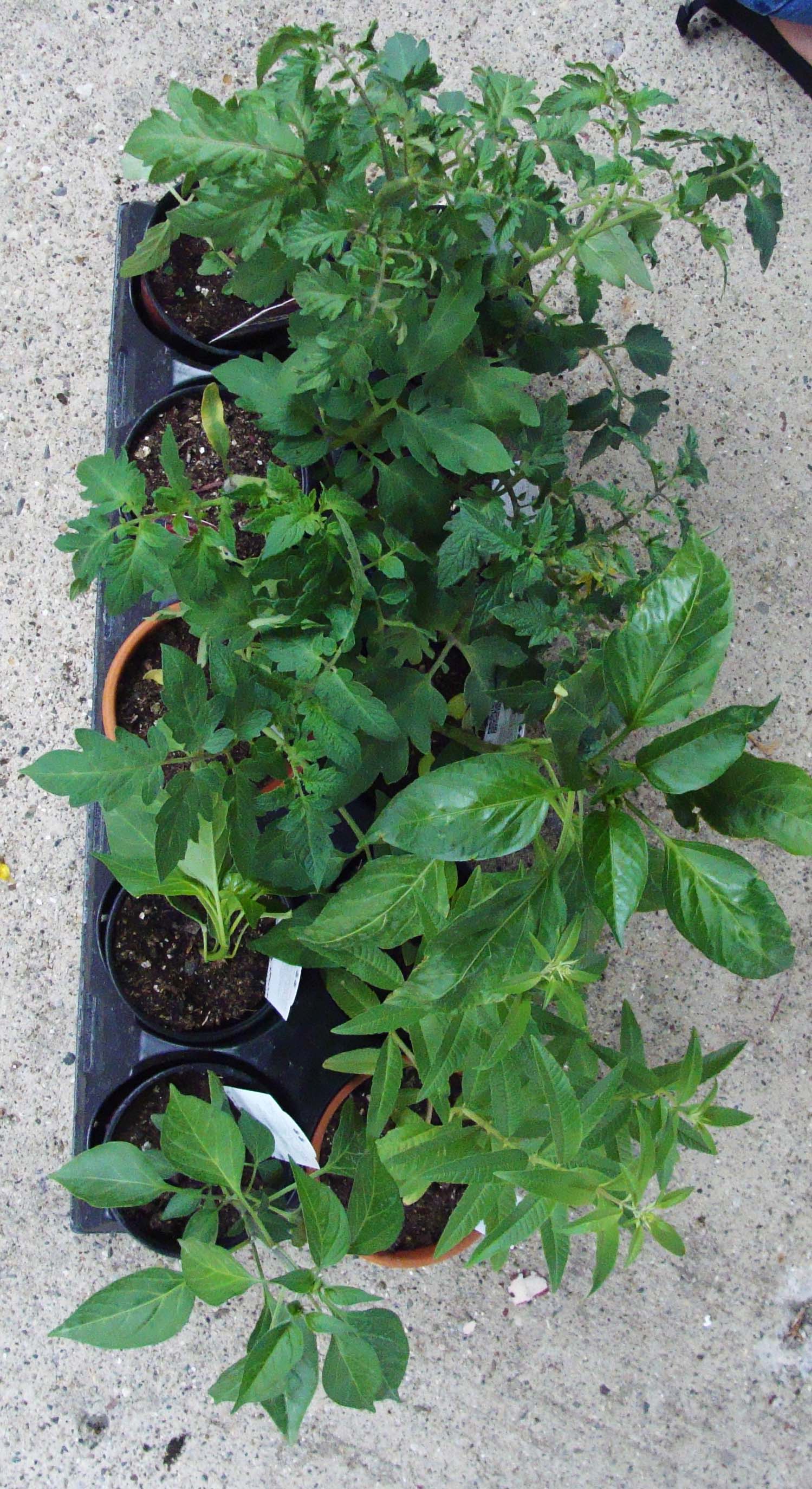Harvest Time: From Farm to Table to Little Mouths!
 Friday, June 15, 2012 at 8:15PM
Friday, June 15, 2012 at 8:15PM  Melanie Potock, MA, CCC-SLP tagged
Melanie Potock, MA, CCC-SLP tagged  children,
children,  feeding therapy,
feeding therapy,  gardening,
gardening,  parents,
parents,  picky eaters
picky eaters  Email Article
Email Article  Print Article in
Print Article in  Parents/Kids,
Parents/Kids,  organic garden
organic garden 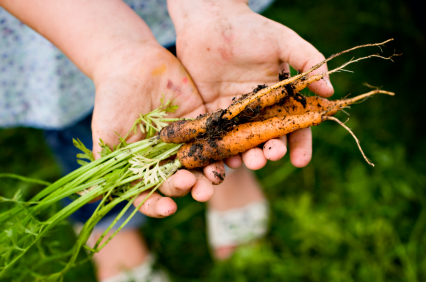
By Melanie Potock, MA, CCC-SLP, of MyMunchBug.com
The Joy of Gardening
When I walk about my neighborhood, I love to stroll past our community garden: plot after plot of vegetables lined up in perfect order, ready for inspection. In the cool Colorado evenings, parents and kids gather to ooh and ahh at what new plant is peeking out of the earth. Today I saw a three year old cutting lettuce with “safety scissors” that his mom had brought especially for his little fists.
Teaching kids to become more adventurous eaters begins in the garden. When I decided to produce a children’s CD that celebrated the joy of food, I knew it had to include a garden song. Joan Huntsberry Langford, the singer and songwriter, titled it “Harvest Time” and recreated the sensory experience of growing food in the garden, harvesting and ultimately, enjoying it together around the family table.
Healing Picky Eating Begins in the Dirt
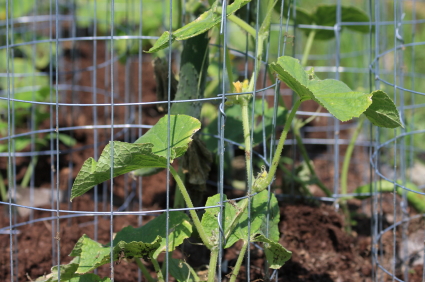 Cucumbers curling around a trellise.Got a picky eater at home? Learning about new foods doesn’t start with steamed broccoli sitting on their dinner plate. It starts with a seed, or a tiny plant and most importantly, little hands in dirt. Children love to take care of living things, and plants are no exception. Daily watering and tending to a garden gently exposes a child to a new food until harvested, when it eventually finds its way to a lovely family dinner.
Cucumbers curling around a trellise.Got a picky eater at home? Learning about new foods doesn’t start with steamed broccoli sitting on their dinner plate. It starts with a seed, or a tiny plant and most importantly, little hands in dirt. Children love to take care of living things, and plants are no exception. Daily watering and tending to a garden gently exposes a child to a new food until harvested, when it eventually finds its way to a lovely family dinner.
When I work with children in the community and we are exploring a garden, I bring a clean bucket of cool water with us. While most children love to play in dirt, some are tactilely defensive, especially picky eaters. Having a bucket to swiftly drop a muddy carrot in or to wash tickly palms eases their uncertainty about touching something gritty. Plus, we may get up the courage to wash that carrot right then and there and even see how loud we can crunch it! Feeding therapists like kids to get dirty, the sensory experience is part of learning about new food. But, if your child is particular about keeping his hands clean, child sized gardening gloves are an option. Better yet, kid-sized tools make it twice as fun! Ideally, larger family gardens have paths for little feet and rows of hardy crops (to ensure success) that are within easy reach for children to explore. Smaller, raised bed gardens are perfect for any child to explore the perimeter or sit on the edge as they pick sugar snap peas or cucumbers. Have you tried growing your cucumbers up a trellis or chicken-wire fence? Brilliant method and so easy!
My Dad & Family Gardening Love
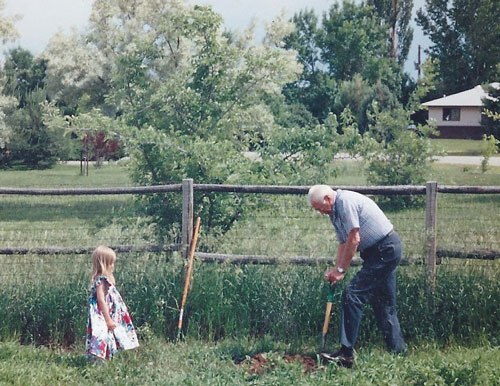 My daughter & my Papa breaking garden ground, many moons ago.
My daughter & my Papa breaking garden ground, many moons ago.
When I was a child, my Dad kept a pocket knife in his “dungarees” when we gardened together. My Dad is now almost 91 and this is the first year that he has not planted a garden. One of my fondest memories of Dad was growing kohlrabi, a cabbage like veggie that has a tough, outer skin. Dad would let the 5 year –old me tug away at the vegetable until it popped out of the dirt, almost toppling me backward. Then he would slap it against his thigh to shatter the dirt clods, dunk it in a bucket of water (hmmm…that’s where I go that idea!) and use his pocket knife to carve away at the hard outer core. What lie beneath was a cross between a mild radish and an apple. Similar to the texture of jicama, but not at all like jicama; well, more like kohlrabi.
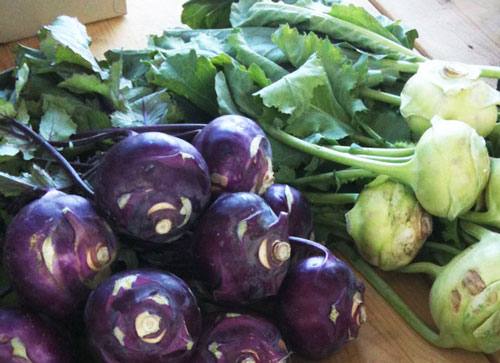 Kohlrabi, cleaned and ready to eat.
Kohlrabi, cleaned and ready to eat.
It may be hard to describe the taste and texture of a kohlrabi, but what I remember vividly is that time with my Dad. It was our time. As I grew to have a family of my own, I asked my Dad to start a planting tradition with my girls. Each summer, he would be bring over giant pumpkin seeds to plant in our horse pasture. Daddy would dig a decent hole and hand the seeds to my daughters to drop in before he covered it, patted down a nice mound and finally handed the hose to the girls for the pumpkin seed’s first long drink.
Gardening creates memories for your family. Whether a pot of herbs on the kitchen window sill or an acre of corn, there is nothing quite like the experience of coming together as a family to plant and enjoy the harvest. Best wishes to all of you during Harvest Time!
About Melanie
 Melanie Potock, MA, CCC-SLPMelanie is speech language pathologist who specializes in feeding. Her work brings her into the homes and schools of her clients, kids, who for various reasons have difficulty with food or with eating. She works with kids and their parents to develop effective strategies that help children become “more adventurous eaters”. At least 50% of her clients have food allergies or intolerances, and for them, “adventurous eating” takes on a special meaning. Melanie is also the author of Happy Mealtimes with Happy Kids” and the executive producer of “Dancing in the Kitchen.”
Melanie Potock, MA, CCC-SLPMelanie is speech language pathologist who specializes in feeding. Her work brings her into the homes and schools of her clients, kids, who for various reasons have difficulty with food or with eating. She works with kids and their parents to develop effective strategies that help children become “more adventurous eaters”. At least 50% of her clients have food allergies or intolerances, and for them, “adventurous eating” takes on a special meaning. Melanie is also the author of Happy Mealtimes with Happy Kids” and the executive producer of “Dancing in the Kitchen.”
More Posts From Melanie
Why Children with Autism are Often Picky Eaters
Review: The Magic of the BellyFull Kit (From the Hopeful Company)
The 12 Days of Christmas -- My Favorite Lunchtime Things (Part 1)
Tips to Help Your Food Allergic Child Belong During the Holidays
How to Talk Turkey (and Food Allergies) at Thanksgiving
How Can Parents Feel Less Stress with a Food Allergic Child in School?
Follow Your Gut: What's Eating My Daughter's Stomach? (Part I)


